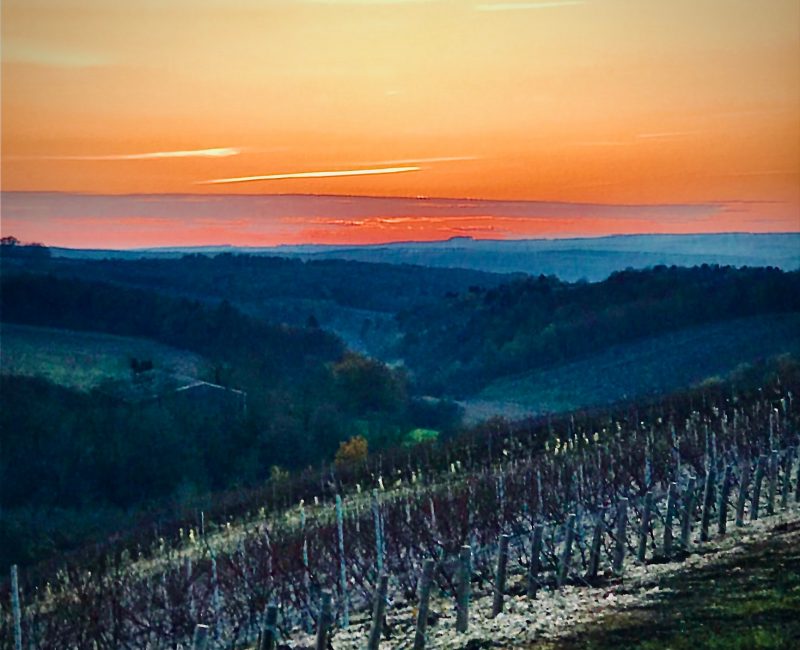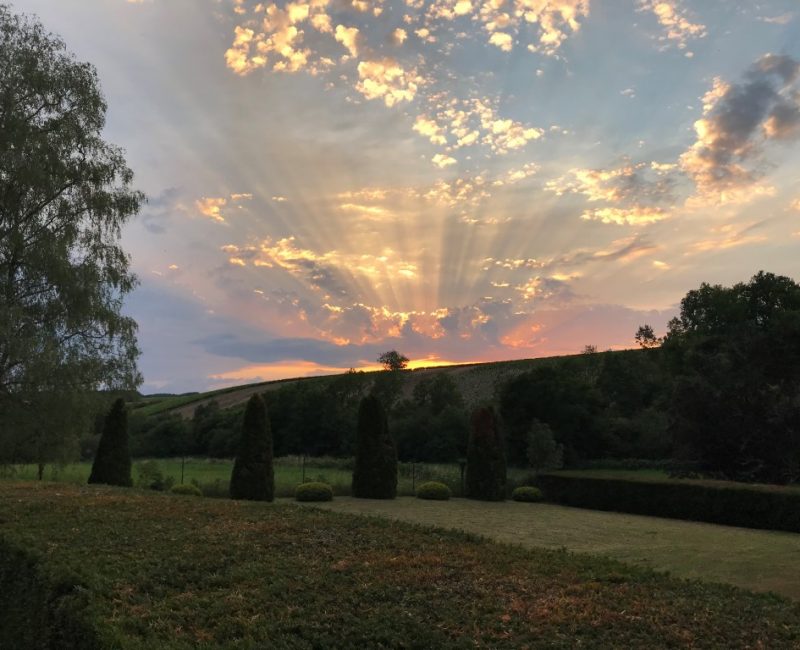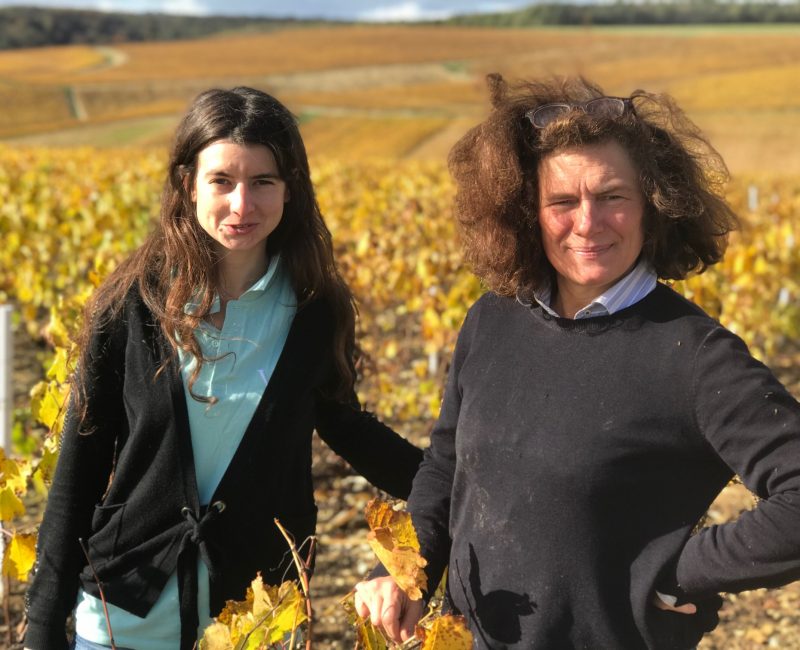O u r p l o t s o f l a n d

Surrounded by two woods and an ecological wasteland, the Côta Grand Claude is a home of biodiversity. It is thus not uncommon to encounter hares, wild boars, deer as well as many species of birds. Birds can shelter in the eighteen nesting boxes located on the plot and in the nearly 200 meters of hedges downhill.
T h e C ô t a G r a n d C l a u d e
The Côta Grand Claude is the first plot taken over by the Château de Viviers in October 2019. It is also the first plot to be converted to Organic Farming in January 2020. With an area of 3.60 ha, it is an ADO Chablis and is planted with Chardonnay. It was planted between 1984 and 1987 with rootstock 41B. Since 2020, it is planted of massale selection with a diversity of rootstocks (140Ru, 110R, Paulsen, 5C, 333EM).
Due to its steep slope (between 35 and 48%), the Côta Grand Claude is a difficult plot to maintain. Its clay-limestone soil is declined in rendosol and hard calcosol of the Portlandian (top of the hill), in rendosol on marl and marl limestones of the Kimmeridgian (middle of the slope) and in colluviosol of hard limestones of the Portlandian and marl limestone of the Kimmeridgian (bottom of the coast). Moreover, its south/south-east exposure makes the Côta Grand Claude an extremely qualitative plot.
T h e G u e t t e H a u t e
The Guette Haute is the second plot taken over by Château de Viviers in October 2020. It is nevertheless the first plot to be planted by the team during the fall of 2020. It began its conversion to Organic Agriculture in January 2021. The 0.60 ha, are under the ADO Chablis reggulation and planted with Chardonnay. The first part was planted between 1985 and 1986 in rootstock 41B. The second part, planted in autumn 2020, presents only vines in mass selection with a diversity of rootstocks (140Ru, 110R, Paulsen, 5C, 333EM).
The Guette Haute is a hill with a rendosol on Kimmeridgian marl (top of the coast) and a colluviosol of marl limestone on Kimmeridgian marl (bottom of the coast). Its south/south exposure allows it to produce very qualitative grapes.
C l o s d e l a G r a v i è r e
In the Chablis region, next to the Grand Crus, another terroir was famous: the Clos de la Gravière on the slopes of the Gravière in Viviers. It has always been attached to the Château de Viviers. This plot has a wonderful southern exposure and is set in a magnificent forest. Its sub-soil is a marly limestone fo the Kimmeridgian (3rd era – cretaceous).
The vines were uprooted due to phylloxera around 1910-1912. Magnificent oaks and a rare flora have developed there since then, hence the idea of keeping some of these hundred-year-old trees in the middle of the vines to allow communication between them and increase the mutual benefits.
The unique agroforestry -or vitiforestory- project in Burgundy led by the Château de Viviers is located on two exceptional vineyard parcels in the commune of Viviers. The first is the Clos de la Gravière, once as famous as the grands crus, still attached to the Château de Viviers and next to it the côteaux de la Gravière. The idea of the project came from admiring the hundred-year-old oak trees that had grown there since the vines were uprooted in 1910 due to phylloxera. The famous American professor Patty Westerford demonstrated in the 1970s that there is not only communication between trees but also solidarity in the face of water shortages, biomass or insect and animal attacks.

The idea we have in Viviers is to keep the most beautiful trees in the middle of the vineyards so that they can benefit from their century-old experience and bring biomass, light shade, soil life, …. The project will be developed with the help of Paul Krug, an already famous geologist, Guillaume Morvan from the Chamber of Agriculture, forestry experts and more than a dozen students from Lyon and Chaource .
The grapevines were planted in March 2022 with 6 different varieties of rootstocks taling account of conductivity, fertility and soil moisture. New trees and bushes are being replanted to complete this eco-comunication project between vines and trees.
S o u s l e s P l a n t e s
The terroir called “Sous les plantes” has the “Chablis” Appellation d’Origine Contrôlée and is located in the commune of Viviers. These two plots totalling 5.78Ha are very long and the largest on the estate. The plots were planted in 1987 with SO4 and 161-49 C rootstocks. These early rootstocks can compensate for the naturally late character of the plot. The soil is a rendosol on marly limestone or marl, which allows water to be retained longer during droughts. The fields of several hundred metres long and slightly sloping at an altitude of between 280 m and 250 m. The north-west orientation ensure more humidity and a fresher air than the other Cotâ Grand Claude, Guette Haute or La Gravière plots leading to a better productivity however increasing exposition to mildew and powdery mildew. These plots ensure the complementarity of our plots.


